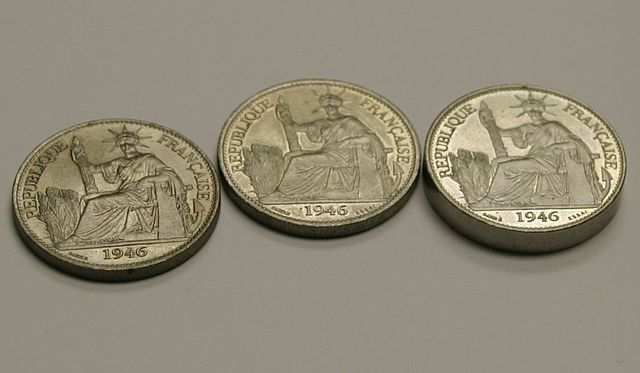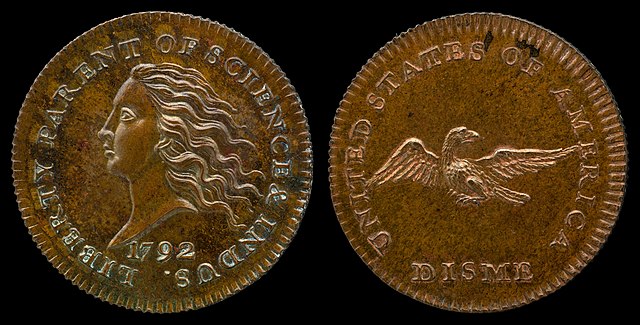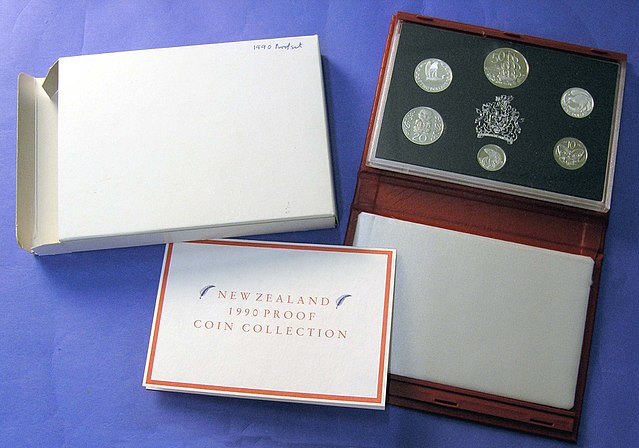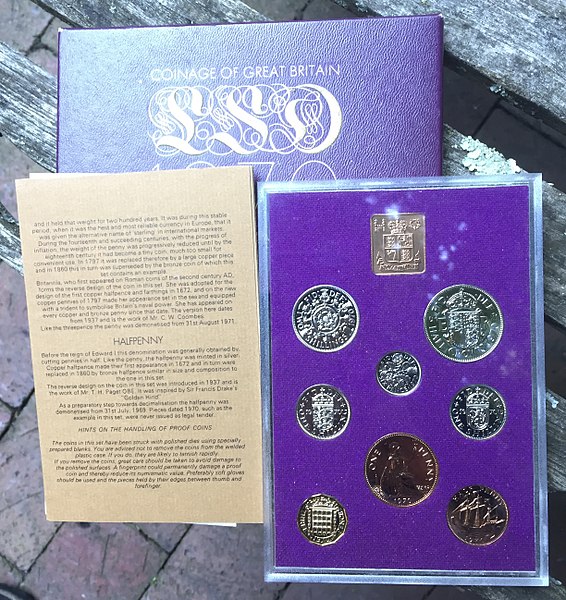A pattern coin is a coin which has not been approved for release, but produced to evaluate a proposed coin design. They are often off-metal strike, to proof standard or piedforts. Many coin collectors collect and study pattern coins because of their historical importance. Many of the world's most valuable coins are pattern coins; nearly 25 of the pieces listed in 100 Greatest US Coins are pattern coins.
Regular coin (left), pattern coin (center) and piedfort (right)
1868 pattern for a large cent-sized, copper-nickel, ten-cent piece. From the Harry W. Bass, Jr. Collection.
Image: NNC US 1792 1C Pattern Silver Center Cent (J 2)
Image: NNC US 1792 10C Pattern Disme Copper (J 10)
Proof coinage refers to special early samples of a coin issue, historically made for checking the dies and for archival purposes. Nowadays proofs are often struck in greater numbers specially for coin collectors (numismatists). Nearly all countries have issued proof coinage.
Decorative packaging for proof set: Reserve Bank of New Zealand; Royal Mint
1970 British proof set
Reverse of a 2010 1⁄10 Onza (ounce) silver proof Libertad coin of Mexico
A 1969 United States Mint Proof set of 5 coins including 40% silver Kennedy half dollar








